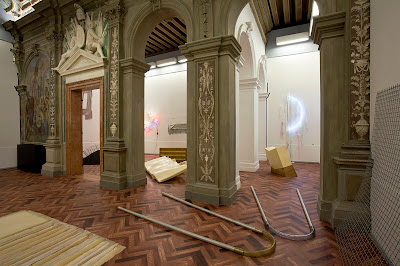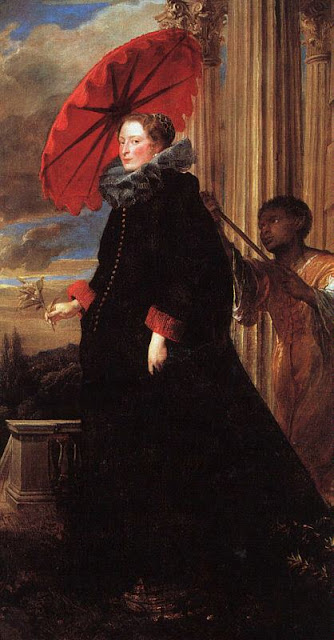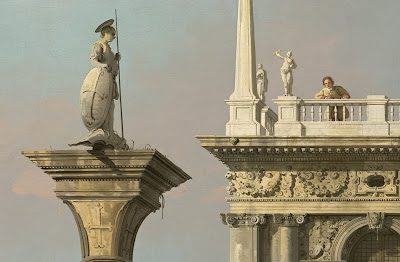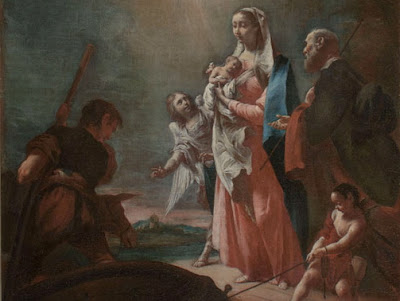 |
Walter del Maria, Art by Telephone, 1969.
“If this telephone rings, you may answer it. Walter De Maria is on the line and would like to talk to you” / “Se questo telefono squilla puoi rispondere, Walter De Maria è in linea e vorrebbe parlare con te” |
More than 40 years later, “When Attidudes Become Form” comes to life again, althought without the initial phrase, “Live in your Head”. Ca’ Corner della Regina, site of the Fondazione Prada, is endowing itself with ascetic white walls and minimalist style typical of a 1970s museum. The aim being to reconstruct a 1:1 scale copy of the Kunstalle in Berne, which in 1969 hosted an exhibition that proved a milestone, because it marked the beginning of the avant-garde movements of that decade, but above all for Harald Szeemann’s layout, which was so closely linked to the works themselves a sto become an integral part of them.
The 1969 exhibition celebrated the fortuitous and chaotic nature of art, its susceptibility to all possible languages and all possible materials and all the practical, unprivileged means.
A più di quarant’anni di distanza viene riproposta “When Attidudes Become Form” con l’omissione della frase iniziale “Live in your Head”. Ca’ Corner della Regina, sede della Fondazione Prada, si dota di asettiche pareti bianche, stile minimalista da museo degli anni Settanta. Obiettivo: ricostruire in scala 1:1 la Kunsthalle di Berna, sede nel 1969, di una mostra che fece epoca. Perché segnò l’esordio delle avanguardie di quel decennio e soprattutto per l’allestimento di Harald Szeemann, così strettamente connesso alle opere da diventarne una parte integrante.
L’esposizione del 1969 celebrò il carattere imprevedibile e caotico dell’arte, la sua permeabilità a tutti i possibili linguaggi e a tutte le possibili materie, così come a tutti gli strumenti utili, non privilegiati.
 |
From left to right / da sinistra a destra
works by / opere di: Gary B. Kuehn, Eva Hesse, Alan Saret, Reiner Ruthenbeck, Richard Tuttle |
I was not born yet in 1969 and I have dealt with a visit to this exhibition with some doubt and suspicion to see an exhibition nostalgic. At the bottom of Berne was an exhibitionbased on improvisation and artistic freedom. How was it possible to do a remake and make it a historical relic? This exhibition, however, surprised me. The location in an ancient Venetian buildingof works which in 1969 marked a turning point in contemporary art produces an effect of breaking even today. I’m not sure that he felt the sensations experienced by visitorsin 1969, but I at the end of the visit I was sure I saw a show that will change the way expose works of art andto build the exhibition spaces.
Io nel 1969 non ero ancora nata e ho affrontato la visita a questa mostra con qualche dubbio e il sospetto di andare a vedere una mostra nostalgica. In fondo a Berna era stata allestita una mostra basata sull’improvvisazione e la libertà artistica. Come era possibile farne un remake e renderla un reperto storico? Questa mostra, invece, mi ha stupita. La collocazione in un antico Palazzo Veneziano di opere che nel 1969 hanno segnato un punto di svolta nell’arte contemporanea produce un effetto di rottura ancora oggi. Non sono sicura di aver provato le sensazioni vissute dai visitatori nel 1969, ma io al termine della visita ero sicura di aver visto una mostra che cambierà il modo di esporre le opere d’arte e di costruire gli spazi espositivi.
 |
From left to right / da sinistra a destra
works by / opere di: Barry Flanagan, Richard Artschwager, Alighiero Boetti, Mario Merz |
 |
From left to right / da sinistra a destra
works by / opere di:Bill Bollinger, Gary B. Kuehn, Keith Sonnier, Walter De Maria, Bill Bollinger |
The show is aremake, even a readymade or an archeological object that is restored by putting together its different fragments. In the same way that the spaces of the Kunsthalle were occupied by a generation of young revolutionary artists in 1969, taking the same approach, the richly decorated spaces of Ca’Corner della Regina are in turn being invaded by the Kunsthalle’s twentieth-century rooms.
This exhibitionhas also allowed me, for the first time, to understand the real message of rupture of the art of those years and thatof my generation is often not perceived. In those years everything was left to the liberating process of doing, where the viewer was not impeded by boundaries, protection systems, pedestals or perimeters, the exhibition became a dialectical field of encounter between the individual artists and the curator, between the event and the architecture: a place where the works formed links with each other, in a kind of continuously-evolving organic weave.
La mostra è un remake, anzi un readymade o un reperto archeologico, ricostruito mettendo insieme tutti
i suoi frammenti. Così come la Kunsthalle fu occupata da una giovane generazione di artisti rivoluzionari nel 1969, con lo stesso spirito gli ambienti riccamente decorati di Ca’Corner della Regina sono a loro volta invasi dalle sale novecentesche della Kunsthalle.
Questa mostra mi ha anche permesso, per la prima volta, di capire il reale messaggio di rottura dell’arte di quegli anni e che dalla mia generazione spesso non viene percepito. In quegli anni tutto era lasciato al processo liberatorio del fare, senza limiti, difese, piedistalli e costrizioni perimetrali, la mostra divenne un campo d’incontro dialettico tra artista e curatore, tra eventi e architettura: un luogo dove le opere realizzate s’intrecciavano tra loro, come in una sorta di trama organica in continua evoluzione.
 |
| Giovanni Anselmo Torsione, 1968 |
 |
From left to right / da sinistra a destra
works by / opere di:Eva Hesse,
Bill Bollinger, Gary B. Kuehn and Keith Sonnier |
 |
| Sol LeWitt Wall Drawing #12: Drawing Series I 1 (A & B) and III 1 (A & B), 1969; Carl Andre 36 Copper Square, 1968 and Frederick Lane Sandback Silver Gray Cord Trapezoid, 1967 |
With “When Attitudes Become Form: Bern 1969/Venice 2013” the Fondazione Prada is reflecting on the notion of the reproducibility of an exhibition through an attempt to broaden the idea of the remake-a common and frequent practice in other cultural domains, such as cinema and music-to the field of art. (from Introduction by Miuccia Prada e Fabrizio Bertelli)
Con “When Attitudes Become Form: Bern 1969/Venice 2013” la Fondazione Prada riflette sull’idea di riproducibilità di un evento espositivo, attraverso un tentativo di allargamento al campo artistico dell’idea di remake, pratica comune e frequente in altri ambiti culturali, quali il cinema e la musica. (dall’Introduzione di Miuccia Prada e Fabrizio Bertelli)
 |
From left to right / da sinistra a destra
works by / opere di:Mario Merz, Barry Flanagan, Richard Artschwager, Robert Morris, Bruce Nauman |
 |
Joseph Beuys, Ja Ja Ja Ja Ja Nee Nee Nee Nee Nee [Yes Yes Yes Yes Yes No No No No No], 1968
and
Fettecke [Fat Corner], 1969, Reenacted with The Estate of Joseph Beuys |
 |
| Gilberto Zorio Il fuoco è passato [The Fire Has Passed], 1969 |
 |
Gilberto Zorio Torce [Torches], 1969
and
Mario Merz Acqua scivola (Igloo di vetro) [Water Slips Down (Glass Igloo)], 1969 |
 |
| Schulwarte Bern |
 |
| Schulwarte Bern |
 |
| Neil Jenney The Siegmund Biederman Piece, 1968 |
 |
Giovanni Anselmo Untitled, 1969
and
Il cotone bagnato viene buttato sul vetro e ci resta, 1969 and Untitled, 1968 |
 |
From left to right / da sinistra a destra
works by / opere di:Richard Long A Walking Tour in the Berner Oberland, 1969; Claes Oldenburg Model (Ghost) Medicine Cabinet, 1966; Richard Artschwager Blp, 1968; Claes Oldenburg Study for Pants Pocket, 1963; Joseph Beuys, Ja Ja Ja Ja Ja Nee Nee Nee Nee Nee, 1968 |
 |
| Joseph Beuys Fettecke, 1969 |
 |
From left to right / da sinistra a destra
works by / opere di:Keith Sonnier, Richard Artschwager, Richard Tuttle, Alan Saret, Gary B. Kuehn and Walter De Maria |
 |
| Franz Erhard Walther, Werkzeichnungen, 1963–69 and Werksatz, 1963–68 |
 |
| Ger van Elk Tres Qualitates Lucis, in Modo Rustico Californiae, 1968–69 |
 |
| Harald Szeemann’s documents, notebooks and photographs from the Harald Szeemann Archive |
 |
| Ca’ Corner della Regina, Venice |
 |
| Stephen Kaltenbach Graffiti Stamp: Lips of Artist, 1968 |
Fondazione Prada
website
Fondazione Prada, Ca’ Corner della Regina Venice, 1 June – 3 November 2013
Photo: Attilio Maranzano
Courtesy: Fondazione Prada |

































.jpg)




.jpg)












